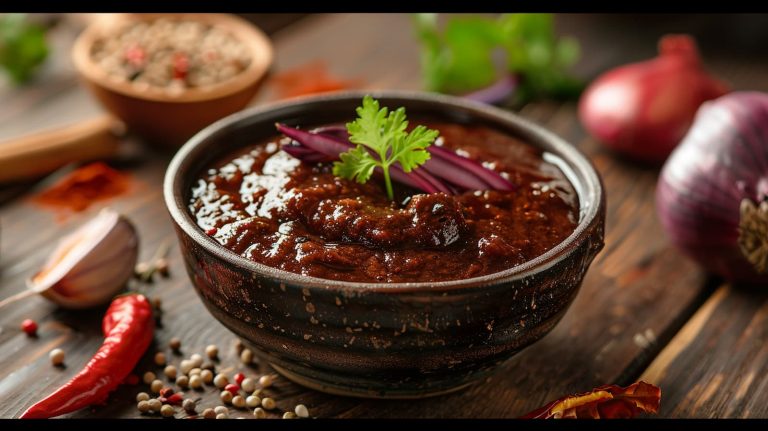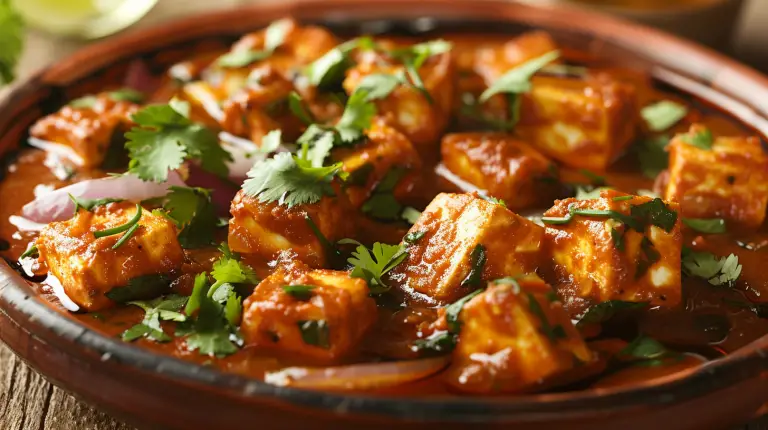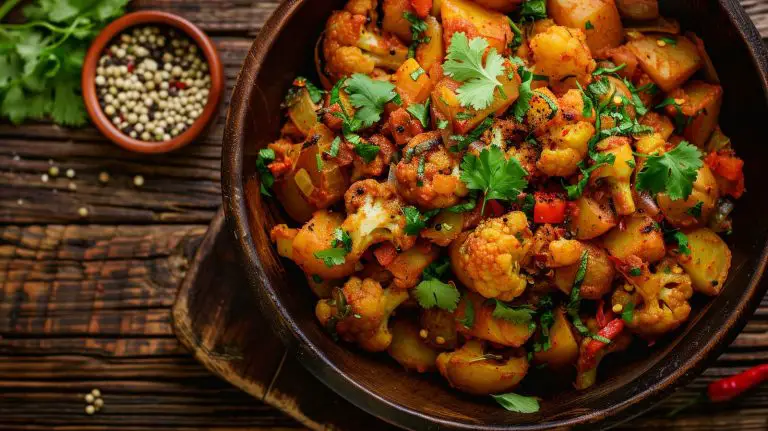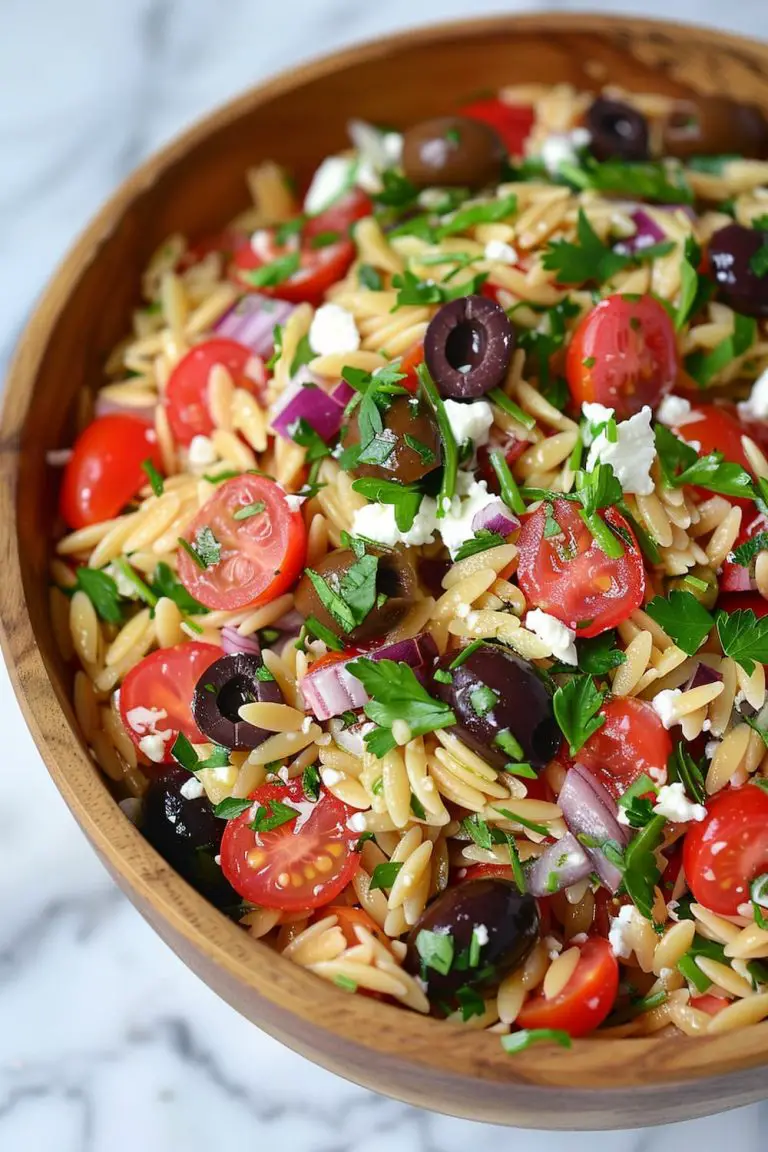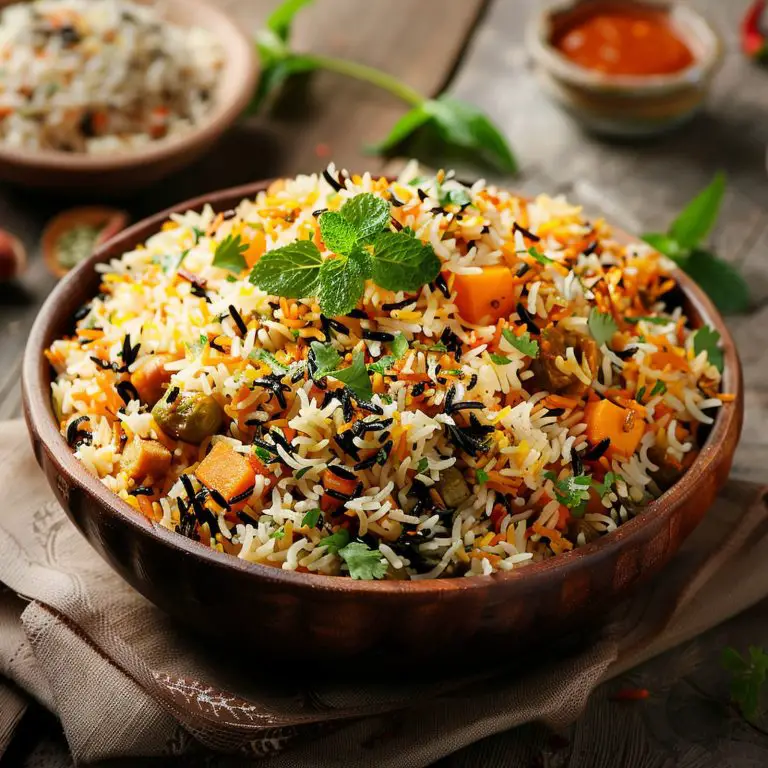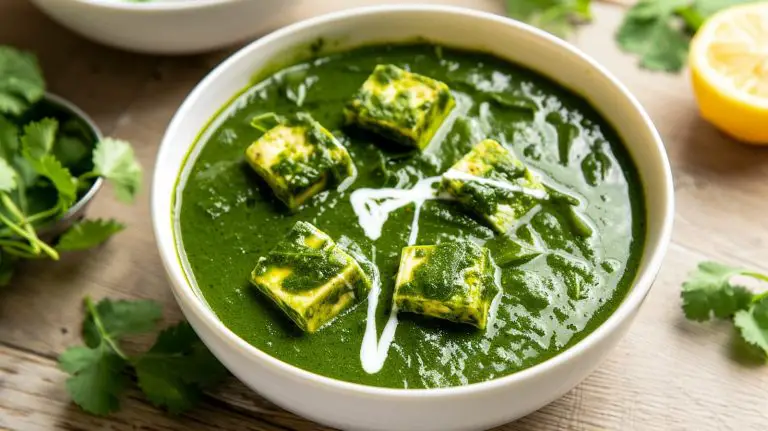This Flavor-Packed Chana Masala Recipe Will Make You Forget About Takeout
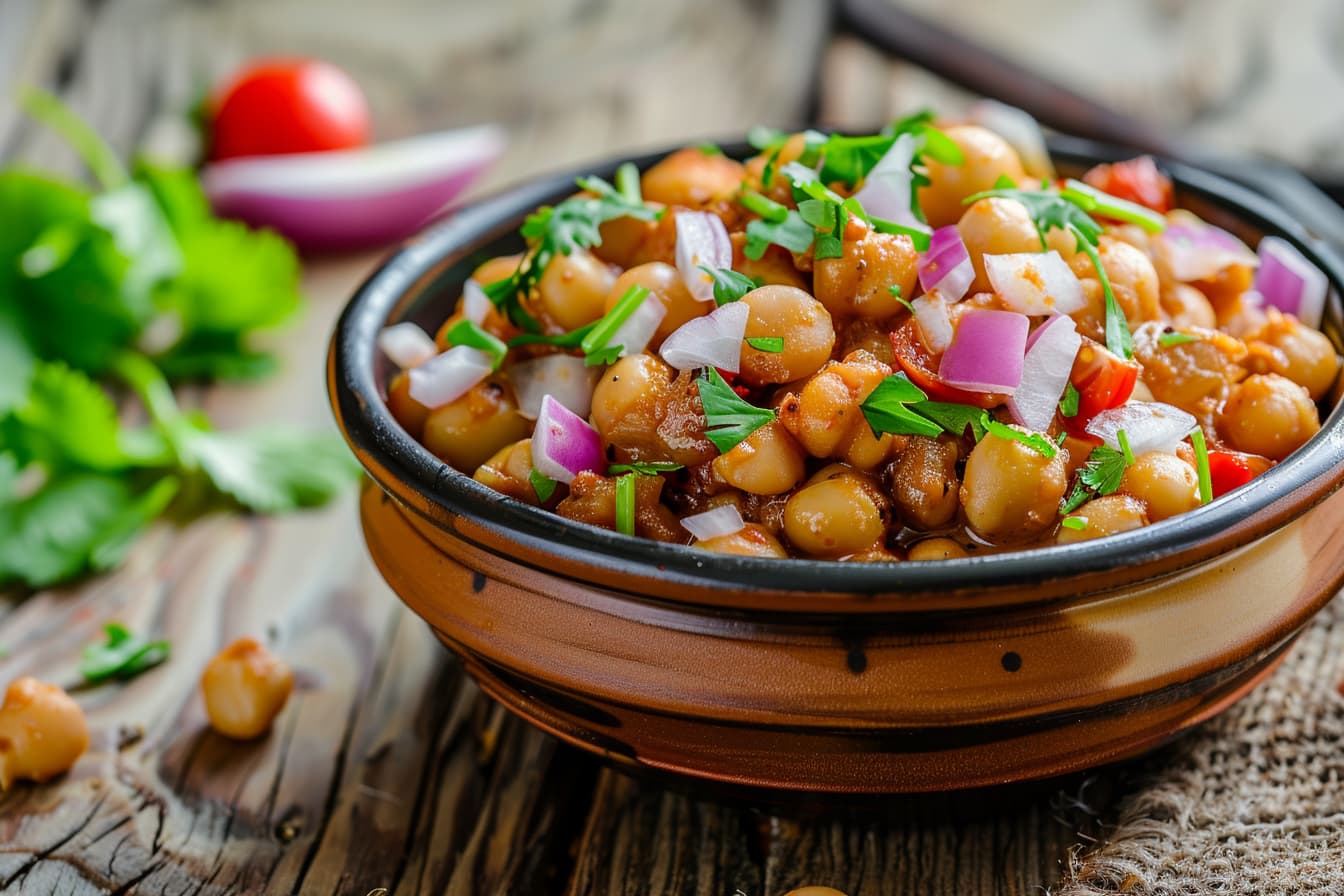
Imagine you’re rummaging through your kitchen, looking for something to whip up quickly that’s both hearty and satisfying. We’ve all been there, right?
Well, look no further because today I’ve got your back with a Chana Masala recipe that’s as easy to make as it is flavorful.
In this guide, you’ll learn
- The Grand History of Chana Masala
- How to make mouth-watering Chana Masala in your kitchen
- Healthy Vegan Alternatives For The Items Used In the Recipe
- Common Mistakes To Avoid, Pro Tips To Enhance The Taste Of the Dish
- FAQs (Reader Questions Answered) and much more stuff!
So, grab your apron, and let’s dive in!
Quick Origin Story Of The Chana Masala Recipe
Origins and Cultural Significance of Chana Masala:
Chana Masala, also known as Chole Masala, is a dish with roots in the Indian subcontinent, specifically within the northern regions of India.
- The dish’s history is deeply intertwined with the spread of chickpeas (chana) through trade routes in ancient times. Chickpeas have been a part of the Indian diet for centuries, possibly millennia, given their cultivation dates back over 7,000 years in the Middle East.
- Chana Masala is especially prominent in the vegetarian diets in many parts of India, serving as a protein-rich, flavorful option. The specific masala (spice mix) used in Chana Masala has evolved.
- The dish is also common during celebrations and religious festivals, such as Navratri and Diwali, where vegetarian meals are preferred. Its versatility and ease of preparation make it a favored choice for family gatherings and communal dining.
Regional Variations Chana Masala
While the basic ingredients of Chana Masala remain consistent, regional variations abound across the Indian subcontinent.
- In Punjab, for instance, Chana Masala is typically prepared with heavier use of tomatoes and spices, creating a rich, robust flavor.
- In contrast, versions of the dish in southern India might include coconut or curry leaves, adding a distinct flavor and aroma.
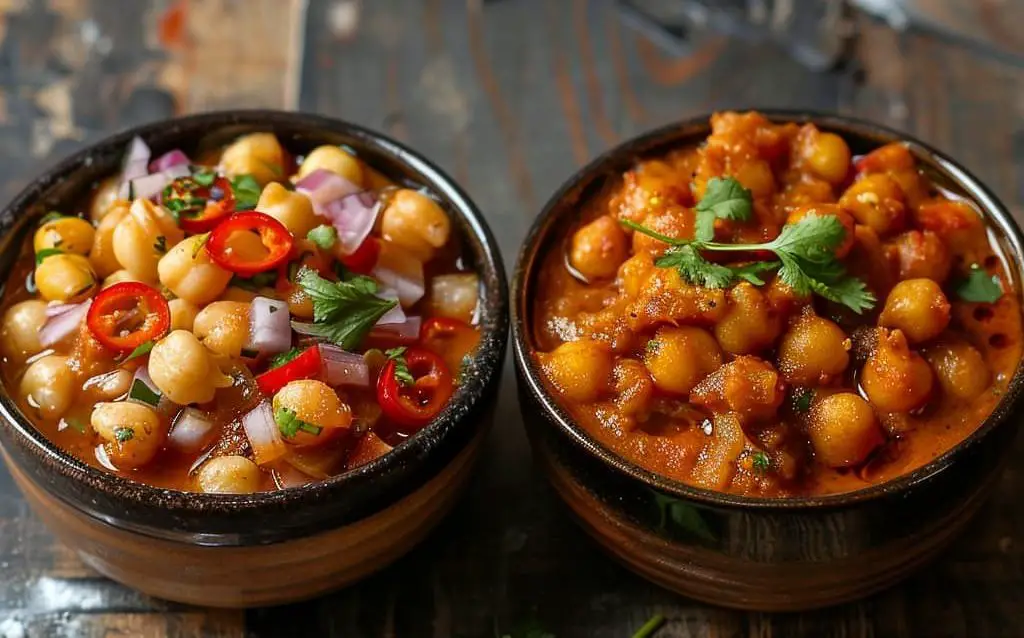
- Some regions prefer a tangier taste, incorporating dried mango powder (amchur), pomegranate seeds (anardana), or pickles to achieve the desired sourness.
Modern Adaptations of Chana Masala
- Vegan and gluten-free versions have gained popularity, using oil instead of ghee and serving the dish with gluten-free bread or rice.
- Fusion recipes that incorporate ingredients like quinoa or kale showcase the dish’s adaptability to different culinary traditions and nutritional preferences.
How to make Restuarant Style Chana Masala At Home As A Beginner
Needed Spices
-
- 1 tsp cumin powder
- 1 tsp turmeric powder
- 1 tsp coriander powder
- 2 tsp garam masala
- ½ tsp smoked paprika (for a unique smoky flavor)
- ½ tsp Red Chilli Powder
- ½ tsp Asafoetida powder
- ½ tsp Amchur powder (optional)
- ½ tsp Mace powder (optional)
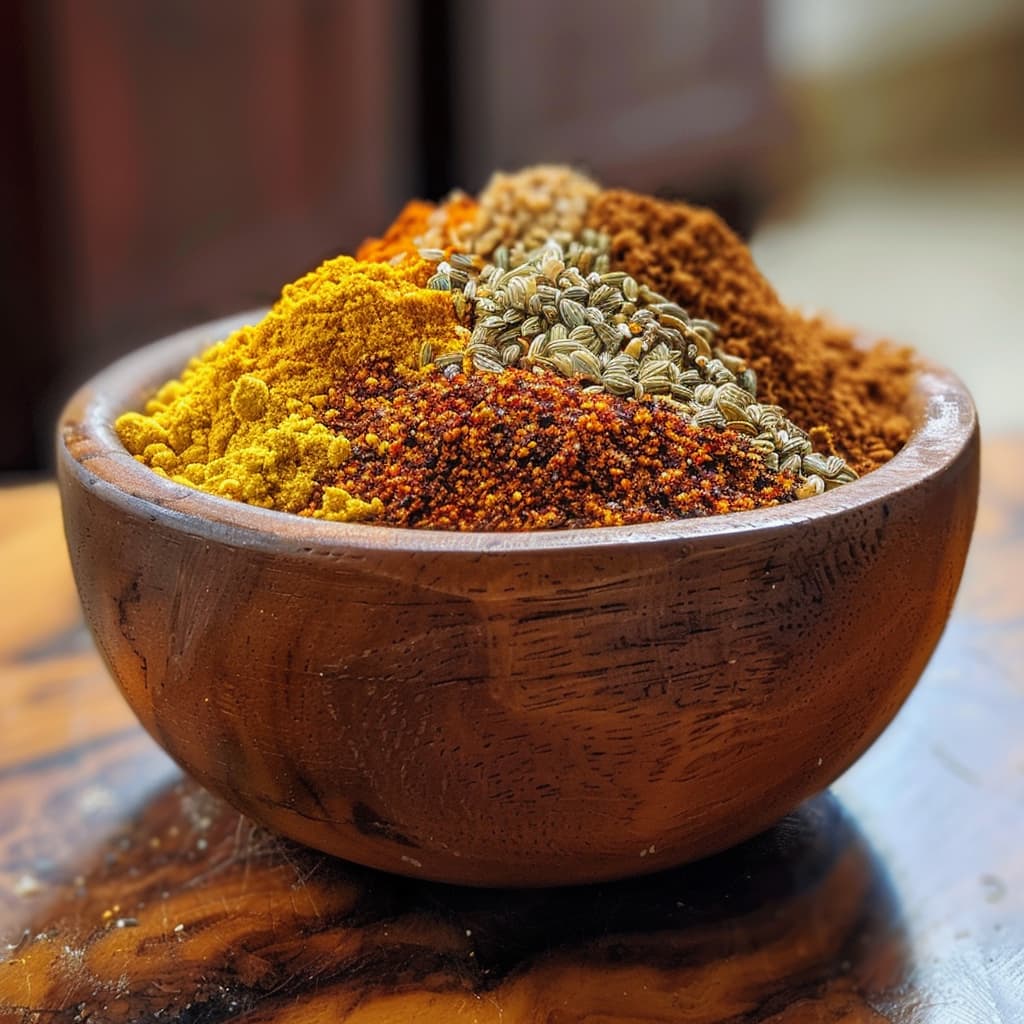
For the Rest of the Preparation
- 2 cups Chickpeas (soaked overnight)
- ½ tsp red chili powder ( You can always increase it if you want)
- 2 Bay leaves
- 1-inch Cinnamon stick or 1 teaspoon coriander powder
- 4 Cups water ( the chanas must be soaked under the water level so adjust as needed)
- 2 tbsp Ghee (optional for better taste and softening of the chanas, you can replace it with avocado oil, coconut oil, or vegan ghee.)
- Salt to taste
- 2 tablespoons olive oil (a healthier alternative to traditional ghee)
- 1 large onion, finely chopped
- 1 small onion for garnishing
- 2 medium tomatoes, pureed or mashed
- 1 small tomato for garnish
- 1 cm Ginger (10 mm) in paste form
- 5 large garlic cloves, mashed in paste form
- 1 green chili and 1 red chili mashed (adjust based on spice preference)
- 5 green cardamom mashed
- Juice of half a lemon
- ½ tsp cumin seeds
- 2 tablespoons fresh cilantro, chopped (for garnish)
- 2 tablespoons of coconut white meat part in grinded form (for garnish)(optional but can be super yummy and enhance the dish taste enormously).
Instructions:
Prepare the Chickpeas:
-
- If you are using dried chickpeas (2 cups), soak them overnight in plenty of water. Make sure they remain soaked for at least 12 hours. Add in a little bit of salt to further soften them. You can even consider using baking soda instead of salt as it’s known to help in softening the chickpeas but it is something I didn’t require to use ever.
- If you don’t have the luxury of soaking the chanas for 12 hours, then soak the chanas in extremely hot water for as long as you can. The hot water can speed up the softening process and keep them under these conditions for at least 5 to 6 hours, I have always found that 10 to 12 hours is the ideal sweet spot.
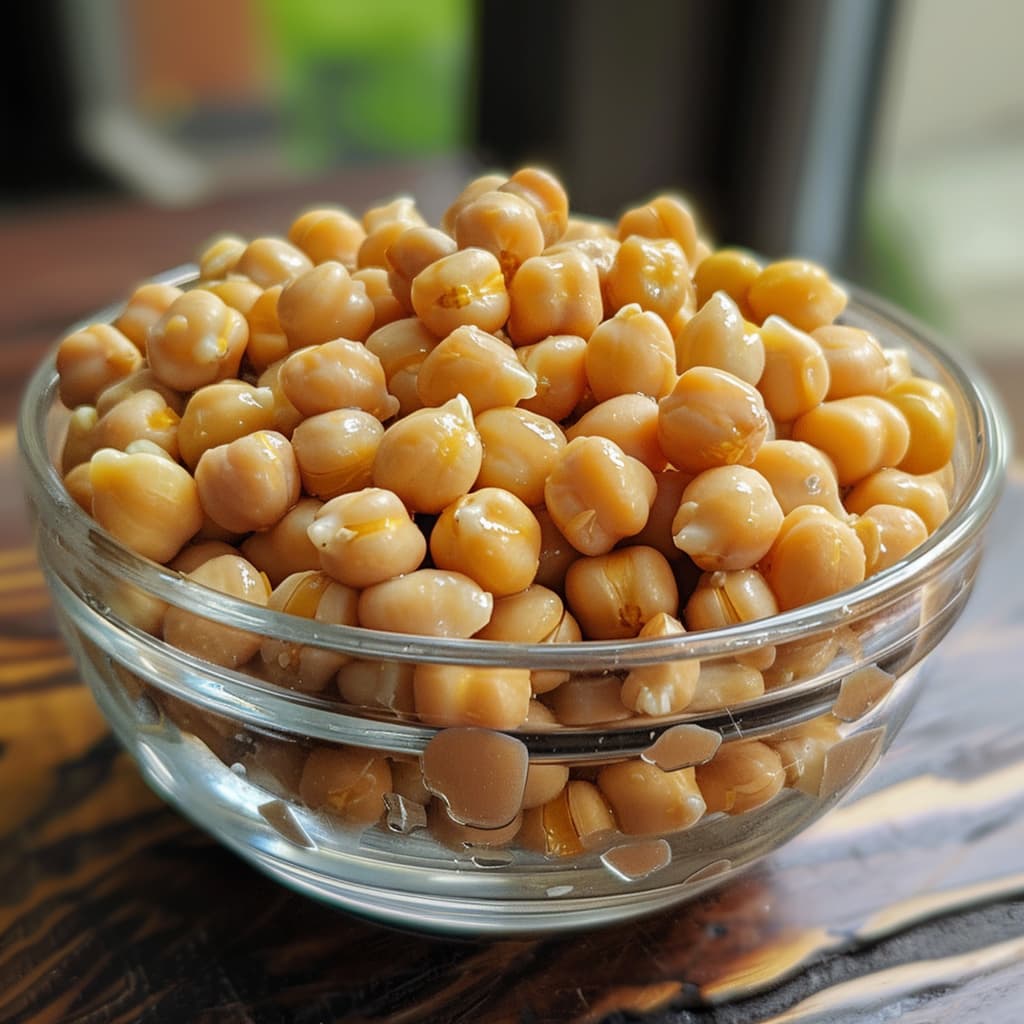
-
- Drain, rinse, and boil in water (3 to 4 cups, the target is to keep the chanas underwater, so adjust accordingly) until tender. Add 2 tbsp Ghee (ghee is the topmost option if you really wanna add a deep rich flavor to the dish but you can replace it with avocado oil, coconut oil, or vegan ghee) into it along with ½ tsp red chili powder and 2 Bay leaves.
- If you are using a pressure cooker, start with a high flame, but right after 1 whistle (siti), say in about 3 to 4 minutes, reduce it to low flame, and keep it here for 8 to 10 minutes. Check the texture of the chanas after that and adjust as per your need.
Cook the Aromatics:
-
- In a large pan, firstly heat the pan for a minute then add 2 tbsp olive oil and heat over medium heat for 1 minute.
- Add ½ tsp cumin seeds with 2 bay leaves and let them sizzle for a few seconds. ( Be careful that the seeds don’t get accidentally burned, reduce it to low flame if you want)
- Add the chopped onions, and cook until they turn golden brown (about 5-7 minutes) at low flame. Stir occasionally to prevent burning.
Add Garlic, Ginger, and Spices:
-
- Prepare a mashed and grinded paste of 5 large garlic cloves, 1 cm ginger, 5 green cardamoms, and 2 chilis (1 green and 1 red, again adjust for personal need).
- Mix in the mashed garlic, ginger, cardamom, and chili paste. Cook for 2 minutes until fragrant. You can use chopped chili instead of the grinded version, it’s your choice, I prefer it to be mashed as I find the flavors are better absorbed in the dish when they are grinded and secondly I don’t like stumbling upon small pieces of chilis while eating.
- Keep it under low heat and add 1 tsp of turmeric, coriander, cumin powder, and cinnamon powder.
- After that, add ½ tsp of red chili powder, Asafoetida powder, smoked paprika (optional), Mace powder(optional), and Amchur powder (optional). Stir well for about 1 minute to release their flavors.
- I don’t use amchur powder if I use lemon juice in the dish as I just want a hint of tanginess in the dish, using both can make it slightly tangier than what suits me but you can always experiment around with it depending on your preference).
Incorporate Tomatoes:
-
- Pour in the 2 medium pureed tomatoes (if in a hurry you can use tomato paste or grinded tomato as well). Season with salt.
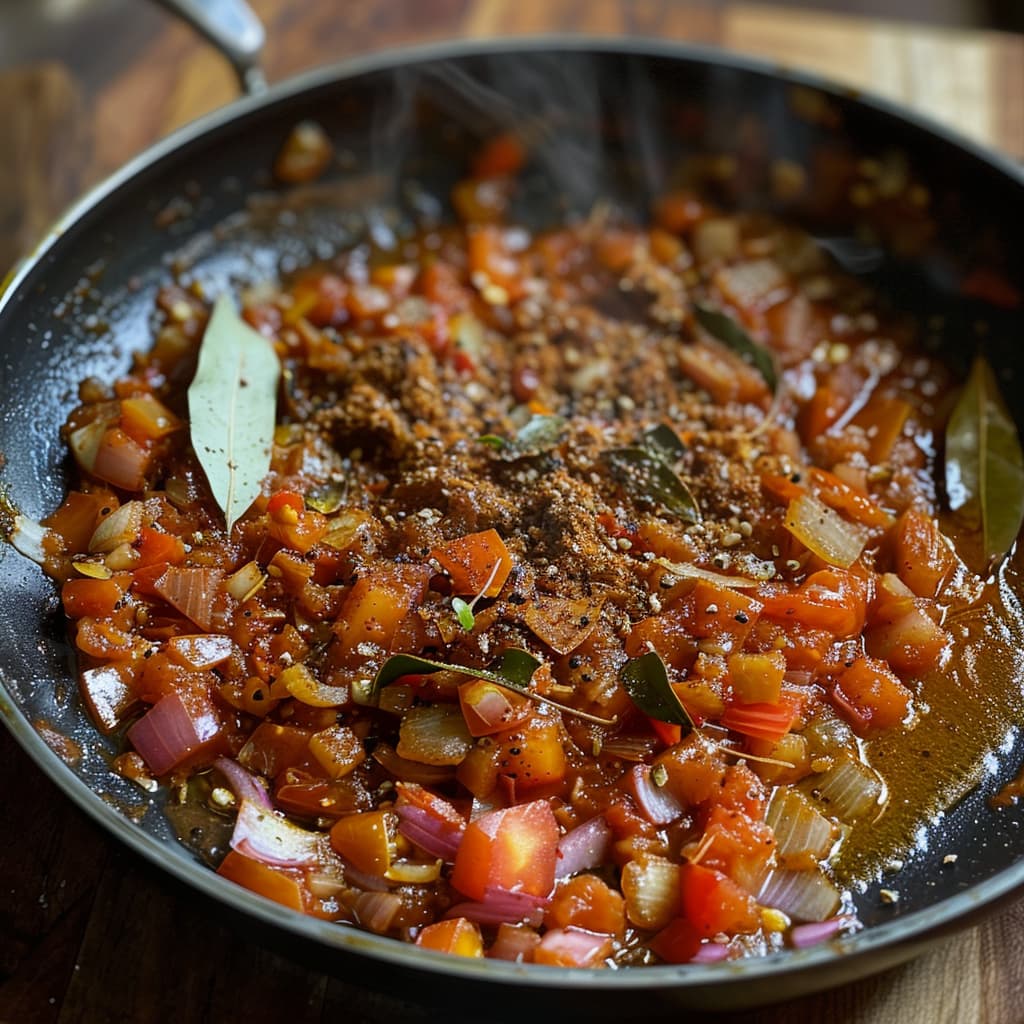
-
- Simmer on low heat until the oil begins to separate from the sauce, about 5 to 7 minutes.
Add Chickpeas:
-
- Add the cooked chickpeas to the tomato mixture. Add enough water to just cover the chickpeas (about 1/2 to 3/4 cup).
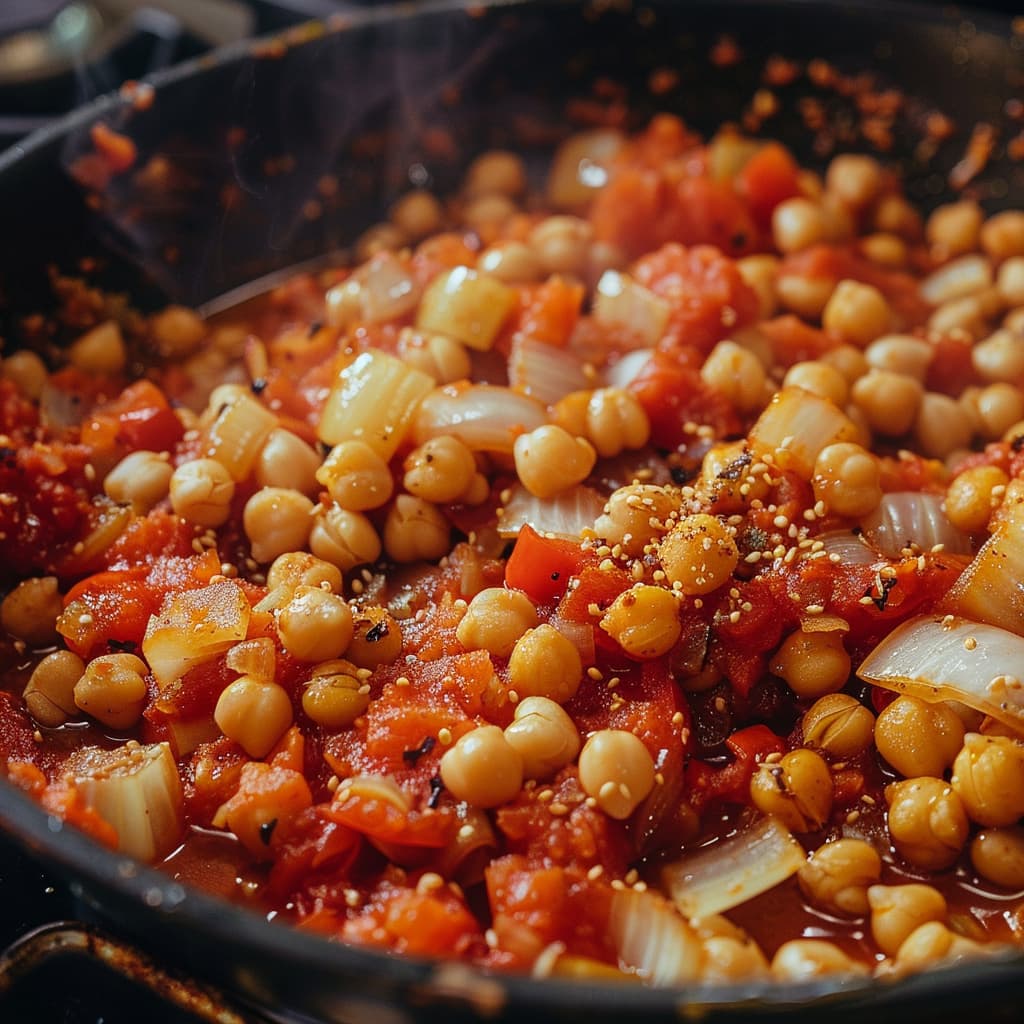
-
- Bring to a simmer, cover, and cook on low heat for 10 to 15 minutes, allowing the flavors to meld.
Final Touches:
-
- Stir in 2 tsp garam masala and half a lemon juice. Adjust salt to taste.
- At low heat, cook uncovered for another 5 minutes to thicken the sauce slightly.
Garnish and Serve:
-
- Sprinkle chopped cilantro, onion rings, sliced small tomato, chopped or grinded coconut white meat (copra) part (optional), over the top for a fresh burst of flavor.
- Serve hot with basmati rice or gluten-free roti for a complete meal.
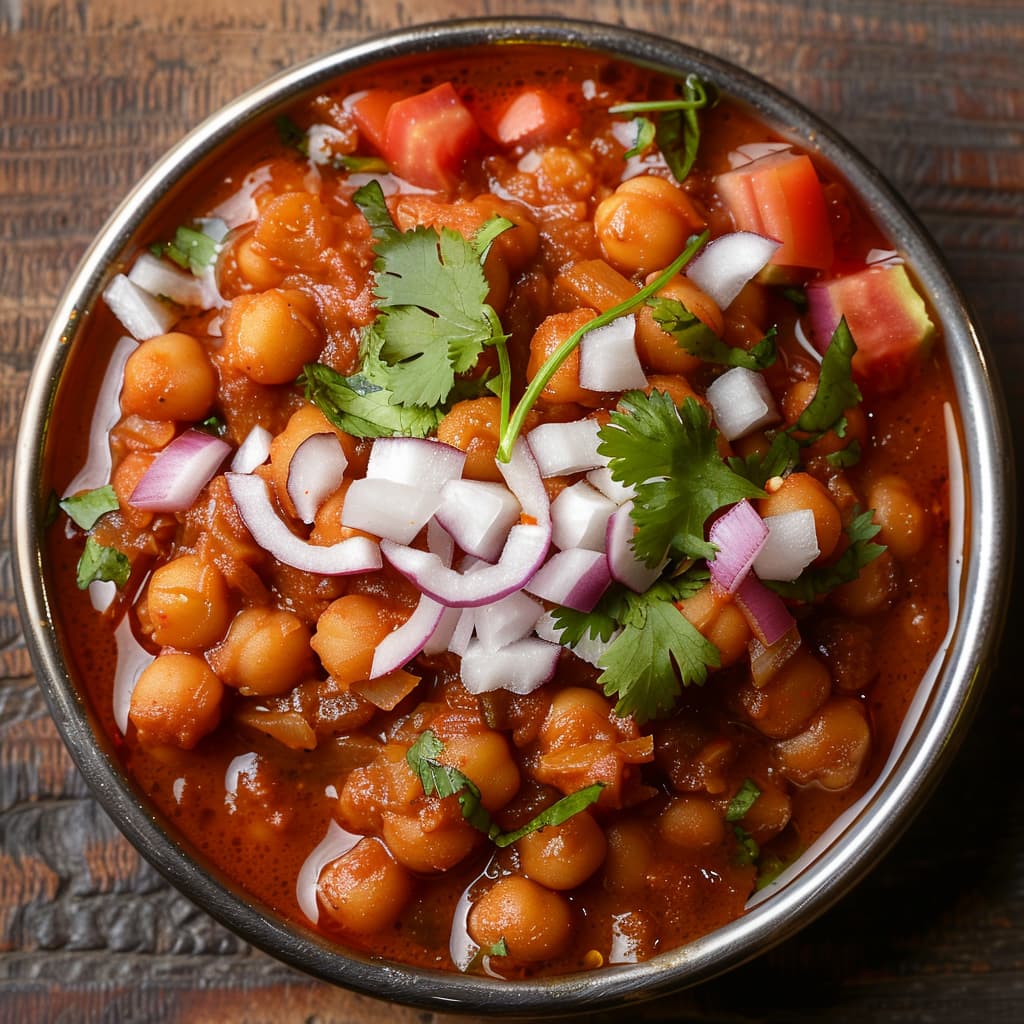
Healthy Vegan Alternatives For The Ingredients Used In the Chana Masala Recipe
1. Ghee:
- Vegan Alternative: Blend cashews with water until smooth to create a rich, creamy texture. Alternatively, use coconut milk vegan ghee, or vegan yogurt to achieve similar creaminess without dairy.
2. Sugar (if used to balance acidity):
-
- Vegan Alternative: Opt for coconut sugar, agave syrup, or maple syrup. These natural sweeteners are healthier and add a subtle sweetness that can balance the tanginess of the tomatoes.
3. Paneer (if making Chana Paneer Masala):
-
- Vegan Alternative: Tofu is an excellent vegan substitute for paneer. Pressed and cubed tofu can mimic paneer’s texture and absorb flavors well. Make sure to use firm or extra-firm tofu for the best results.
4. Butter (for finishing):
-
- Vegan Alternative: Vegan butter or a drizzle of olive oil can be used to add richness to the dish before serving. These alternatives keep the dish dairy-free while still providing a velvety finish.
Mistakes To Avoid While Making Chana Masala
1. Ingredient Selection:
- Chickpeas: Using canned chickpeas instead of dried ones can save time but may compromise on flavor and texture. If using canned, ensure they are thoroughly rinsed. For the best taste, soak dried chickpeas overnight and boil them until tender.
- Tomatoes: Opt for fresh, ripe tomatoes for the puree instead of canned ones to avoid a tinny taste. If fresh tomatoes aren’t available, use high-quality canned tomato puree.
- Spices: Fresh and whole spices ground at home offer more vibrant flavors than pre-ground spices. Avoid old or stale spices, as they lose their potency and will not give the desired depth of flavor.
2. Preparation Pitfalls:
- Soaking Chickpeas: Skipping the soaking of dried chickpeas can result in longer cooking times and harder chickpeas. Soak them overnight to ensure they cook evenly and become tender.
- Ginger-Garlic-cardamom Paste: Do not forget to cook the paste properly, as it can lead to a raw taste. Sauté it until its raw smell disappears before adding other ingredients.
3. Cooking Techniques:
- Sautéing Onions: Rushing the process of caramelizing onions can lead to a lack of depth in the dish’s flavor. Cook onions slowly until they are golden brown.
- Simmering: Failing to simmer the dish long enough can result in undercooked chickpeas and a less harmonious blend of spices. Allow the chana masala to simmer gently until the oil separates from the gravy.
- Use of Heat: High heat can burn the spices or make the dish dry. Cook on medium to low heat for a balanced and rich flavor.
4. Seasoning and Flavoring:
- Salt: Adding too much salt early on can make adjustments difficult later. Season cautiously in the beginning and adjust as needed after the chickpeas are cooked.
- Acidity: Forgetting to balance the acidity can leave the dish tasting flat. A squeeze of lemon juice or a dash of amchur (dry mango powder) towards the end can brighten the flavors.
- Spice Levels: Over or under-spicing can ruin the dish. Start with less and adjust according to taste, especially with potent spices like garam masala and red chili powder.
5. Presentation Tips:
- Garnish: A common oversight is not garnishing the dish, which enhances its appeal. Garnish with fresh cilantro and ginger juliennes to add color and freshness.
- Serving: Serve chana masala in a bowl to contain the gravy, and accompany it with a side of lemon wedges and sliced onions for added texture and flavor.
Pairing Suggestions for Chana Masala
- Beverages: A cooling cucumber or mint raita complements the spice levels of Chana Masala, while for drinks, a tangy tamarind juice or a sweet mango lassi can balance the spices.
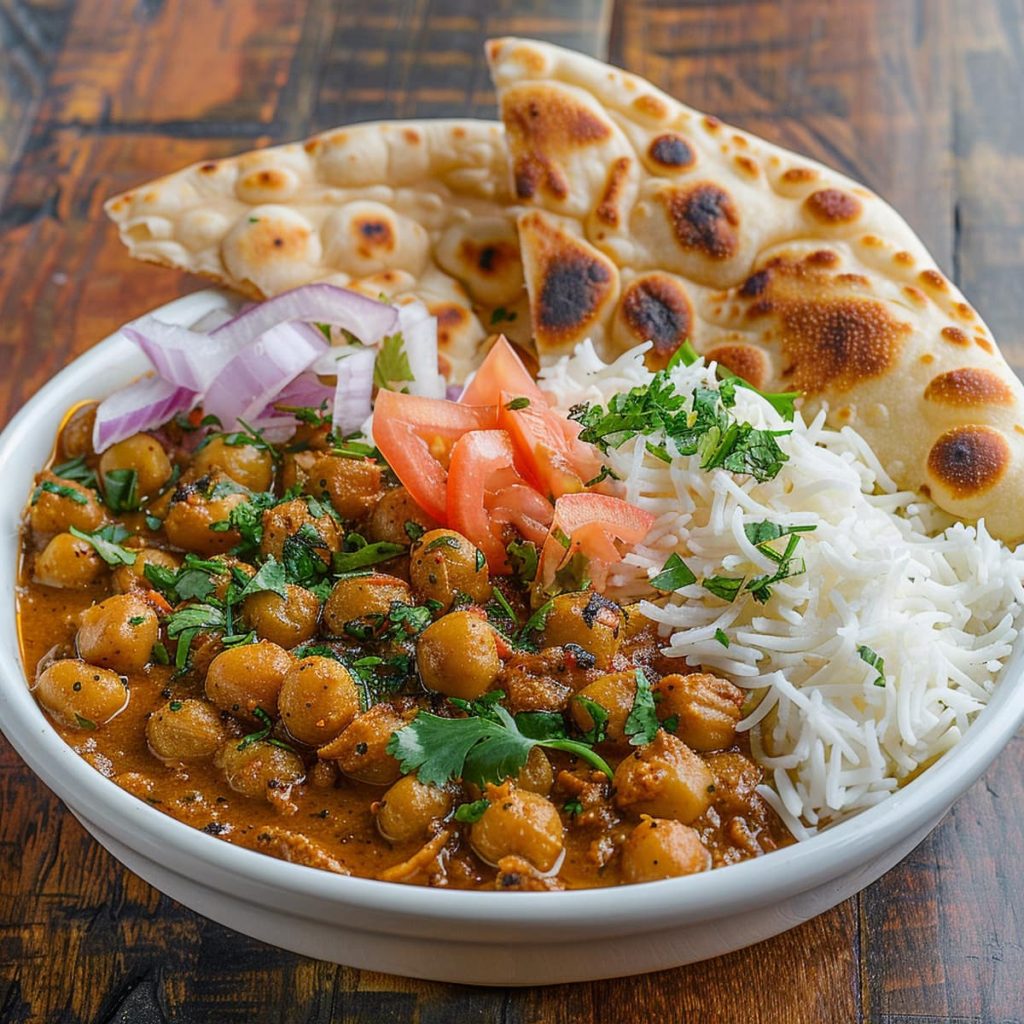
- Side Dishes: Fluffy basmati rice or fresh naan bread pairs beautifully, soaking up the flavorful sauce. A side of kachumber salad (diced cucumber, tomato, and onion salad with lemon juice) adds a refreshing crunch.
- Main Courses: For a fuller meal, pair Chana Masala with other dishes like Paneer Butter Masala for creaminess.
Seasonal Variation for Chana Masala
- Spring: Incorporate fresh green peas or asparagus to add a crisp, fresh element to the dish.
- Summer: Lighten the dish with more tomatoes and fresh coriander, and serve with a side of chilled cucumber salad to cool down.
- Autumn: Add root vegetables like sweet potatoes or carrots, which blend well with the hearty nature of Chana Masala and reflect the harvest season.
- Winter: Incorporate winter greens like spinach or kale for added nutrition and a pop of color, making the dish more comforting during colder months.
Always Keep In Mind that the inclusion of newer veggies or spices can impact the dish’s overall taste, so you may need to adjust your other spices or salt portions to counter that.
Common Problems You May Face While Cooking Chana Masala
Problem: Overcooking the Chickpeas
You might find your chickpeas are too mushy if you overcook them, especially if using canned chickpeas that are already soft.
Solution: If using dried chickpeas, ensure they are cooked until just tender – they should still hold their shape. For canned chickpeas, reduce the cooking time in the masala, letting them simmer just long enough to absorb the flavors.
Problem: Spices Not Well Integrated
Your Chana Masala might taste bland if the spices aren’t properly roasted or mixed into the dish.
Solution: Toast the spices in oil at the beginning of cooking until they’re fragrant. This step releases their flavors. Make sure to stir them well with the onions and tomatoes to ensure they’re evenly distributed.
Problem: Sauce Not Thickening
You might find your Chana Masala’s sauce is too watery if the tomatoes are overly juicy or you’ve added too much water.
Solution: Let the dish simmer uncovered to allow excess water to evaporate. Stir occasionally, and give it time to reduce to the desired consistency.
Problem: Uncertain About Garnishes
You might skip the garnishing step, not realizing its importance in adding fresh flavors and textures to the dish.
Solution: Don’t skip the garnish! Fresh, chopped cilantro, a squeeze of lemon juice, or coconut white portions can dramatically lift the dish’s flavors. They add a bright, fresh contrast to the deep, complex flavors of the masala.
Problem: Dish Lacks Depth of Flavor
First attempts at Chana Masala might taste flat if the layering of flavors isn’t executed well.
Solution: Don’t rush the cooking process. Allow onions to caramelize properly, and let the tomatoes cook down until they release their natural sugars. Adding a pinch of sugar or a dash of lemon juice can also help balance and enhance the dish’s flavors.
Pro Tips for Perfecting Chana Masala
- Bloom Your Spices: Heat spices in oil at the beginning of your cooking process to release their essential oils and maximize flavor. This technique, known as blooming, ensures a more robust taste in your Chana Masala.
- Balance Acidity with Sweetness: If your tomatoes are too acidic, balance the Chana Masala with a pinch of sugar or a splash of coconut milk. This not only rounds out the flavors but also adds a creamy texture.
- Freshness is Key: Whenever possible, use fresh ginger and garlic over pre-minced varieties. Grinding your garam masala from whole spices can also make a significant difference in the freshness and vibrancy of the dish.
FAQs about Chana Masala Recipe
1. Can I make Chana Masala without soaking the chickpeas overnight?
- Solution: Yes, you can use the quick-soak method by boiling chickpeas for a minute, and then letting them sit covered for an hour. However, overnight soaking is preferred for optimal texture and digestion.
2. Can You use canned tomatoes instead of fresh ones?
- Solution: Yes, canned tomatoes can be a convenient substitute for fresh. Opt for high-quality canned tomatoes without added seasoning to control the flavor of your Chana Masala. Make sure to wash them properly.
3: Can I use canned chickpeas instead of dried ones?
- Solution: Yes, canned chickpeas are a convenient alternative to dried chickpeas. Just remember to rinse them thoroughly before use to remove excess sodium and preservatives. You will also need to adjust the cooking times as canned chickpeas are already cooked.
4. My Chana Masala doesn’t have the restaurant-style deep red color. How can I achieve that?
- Solution: The deep red color often comes from the use of both ripe tomatoes and a bit of tomato paste. Paprika or red chili powder can also enhance the color but it will also enhance the heat.
5. What if I don’t have all the spices listed in the recipe?
- Solution: While having all the spices delivers the most authentic flavor, you can still make a delicious Chana Masala with a simplified spice blend. Cumin, coriander, turmeric, and garam masala are the core spices. As you cook more often, you can gradually build your spice collection.
6. How can I make my Chana Masala thicker?
- Solution: To thicken the sauce, you can mash some of the chickpeas with the back of your spoon during cooking, or let the dish simmer uncovered to reduce the liquid. A small amount of tomato paste can also help thicken and enrich the sauce. Another method is to add a small amount of besan (chickpea flour) or cornflour as a thickener.
7. Can I prepare Chana Masala in advance?
- Solution: Absolutely! Chana Masala tastes better the next day as the flavors have more time to meld. Store it in an airtight container in the refrigerator and gently reheat before serving.
8. Is there a way to reduce the dish’s heat without compromising flavor?
- Solution: Yes, you can reduce the amount of chili powder or green chilies to lower the heat. You can omit the red chili powder altogether if you want. Adding a dollop of yogurt or coconut milk can also temper the spiciness while adding a creamy texture.
9. What can I serve with Chana Masala for a complete meal?
- Solution: Chana Masala pairs wonderfully with basmati rice, naan, roti, or even quinoa for a gluten-free option. A side of cucumber raita and a simple onion salad complements the flavors and adds freshness to the meal.
10. How can I add more protein to this dish?
- Solution: To increase the protein content, consider adding paneer (Indian cheese) cubes or tofu for a vegan option. You could also incorporate other legumes such as lentils or black beans.
11. The recipe calls for garam masala. Can I make my own if I don’t have it?
- Solution: Yes, you can make a simple version of garam masala powder at home by mixing ground cumin, coriander, cardamom, cinnamon, cloves, and nutmeg. Start with small amounts and adjust according to taste.
So that was it from my side!
Have you ever cooked Chana Masala for a special occasion before? Tell us about your unique variations and how they turned out.
Share your stories and tips with me through the comments below to inspire and connect with fellow food enthusiasts.
Cheers…
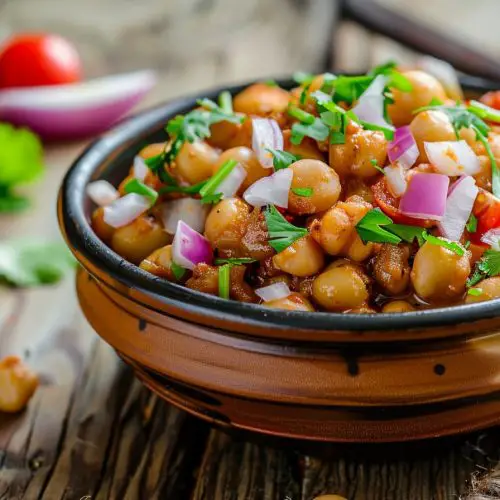
Chana Masala Recipe
Ingredients
- 1 tsp cumin powder
- 1 tsp turmeric powder
- 1 tsp coriander powder
- 2 tsp garam masala
- ½ tsp smoked paprika for a unique smoky flavor
- ½ tsp Red Chilli Powder
- ½ tsp Asafoetida powder
- ½ tsp Amchur powder optional
- ½ tsp Mace powder optional
- 2 cups Chickpeas soaked overnight
- ½ tsp red chili powder You can always increase it if you want
- 2 Bay leaves
- 1- inch Cinnamon stick or 1 teaspoon coriander powder
- 4 Cups water the chanas must be soaked under the water level so adjust as needed
- 2 tbsp Ghee
- Salt to taste
- 2 tablespoons olive oil a healthier alternative to traditional ghee
- 1 large onion finely chopped
- 1 small onion for garnishing
- 2 medium tomatoes pureed or mashed
- 1 small tomato for garnish
- 1 cm Ginger 10 mm in paste form
- 5 large garlic cloves mashed in paste form
- 1 green chili and 1 red chili mashed adjust based on spice preference
- 5 green cardamom mashed
- Juice of half a lemon
- ½ tsp cumin seeds
- 2 tablespoons fresh cilantro chopped (for garnish)
- 2 tablespoons of coconut white meat part in grinded form for garnish
Instructions
- Prepare the Chickpeas:
- If you are using dried chickpeas (2 cups), soak them overnight in plenty of water. Make sure they remain soaked for at least 12 hours. Add in a little bit of salt to further soften them.
- If you don’t have the luxury of soaking the chanas for 12 hours, then soak the chanas in extremely hot water for as long as you can. The hot water can speed up the softening process and keep them under these conditions for at least 5 to 6 hours, I have always found that 10 to 12 hours is the ideal sweet spot.
- Drain, rinse, and boil in water (3 to 4 cups, the target is to keep the chanas underwater, so adjust accordingly) until tender. Add 2 tbsp Ghee (ghee is the topmost option if you really wanna add a deep rich flavor to the dish but you can replace it with avocado oil, coconut oil, or vegan ghee) into it along with ½ tsp red chili powder and 2 Bay leaves.
- If you are using a pressure cooker, start with a high flame, but right after 1 whistle (siti), say in about 3 to 4 minutes, reduce it to low flame, and keep it here for 8 to 10 minutes. Check the texture of the chanas after that and adjust as per your need.
- Cook the Aromatics:
- In a large pan, firstly heat the pan for a minute then add 2 tbsp olive oil and heat over medium heat for 1 minute.
- Add ½ tsp cumin seeds with 2 bay leaves and let them sizzle for a few seconds. ( Be careful that the seeds don’t get accidentally burned, reduce it to low flame if you want)
- Add the chopped onions, and cook until they turn golden brown (about 5-7 minutes) at low flame. Stir occasionally to prevent burning.
- Add Garlic, Ginger, and Spices:
- Prepare a mashed and grinded paste of 5 large garlic cloves, 1 cm ginger, 5 green cardamoms, and 2 chilis (1 green and 1 red, again adjust for personal need).
- Mix in the mashed garlic, ginger, cardamom, and chili paste. Cook for 2 minutes until fragrant. You can use chopped chili instead of the grinded version, it’s your choice, I prefer it to be mashed as I find the flavors are better absorbed in the dish when they are grinded and secondly I don’t like stumbling upon small pieces of chilis while eating.
- Keep it under low heat and add 1 tsp of turmeric, coriander, cumin powder, and cinnamon powder.
- After that, add ½ tsp of red chili powder, Asafoetida powder, smoked paprika (optional), Mace powder(optional), and Amchur powder (optional). Stir well for about 1 minute to release their flavors.
- I don’t use amchur powder if I use lemon juice in the dish as I just want a hint of tanginess in the dish, using both can make it slightly tangier than what suits me but you can always experiment around with it depending on your preference).
- Incorporate Tomatoes:
- Pour in the 2 medium pureed tomatoes (if in a hurry you can use tomato paste or grinded tomato as well). Season with salt.
- Simmer on low heat until the oil begins to separate from the sauce, about 5 to 7 minutes.
- Add Chickpeas:
- Add the cooked chickpeas to the tomato mixture. Add enough water to just cover the chickpeas (about 1/2 to 3/4 cup).
- Bring to a simmer, cover, and cook on low heat for 10 to 15 minutes, allowing the flavors to meld.
- Final Touches:
- Stir in 2 tsp garam masala and half a lemon juice. Adjust salt to taste.
- At low heat, cook uncovered for another 5 minutes to thicken the sauce slightly.
- Garnish and Serve:
- Sprinkle chopped cilantro, onion rings, sliced small tomato, chopped or grinded coconut white meat (copra) part (optional), over the top for a fresh burst of flavor.
- Serve hot with Basmati rice or gluten-free roti for a complete meal.

